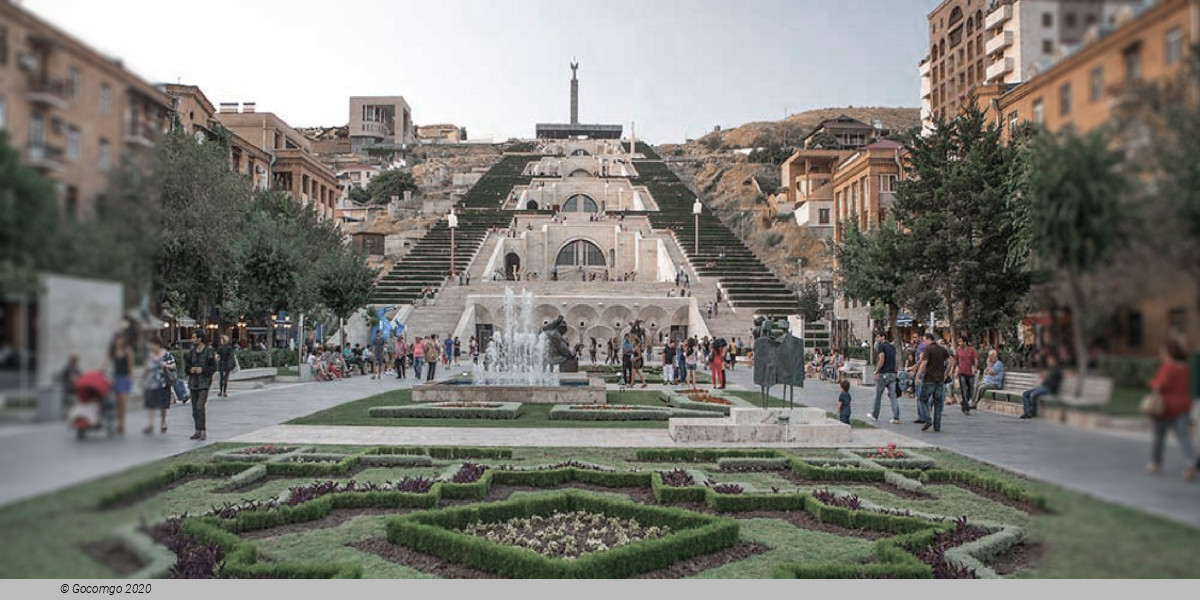Yerevan

Yerevan is the capital and largest city of Armenia and one of the world's oldest continuously inhabited cities. Situated along the Hrazdan River, Yerevan is the administrative, cultural, and industrial center of the country. It has been the capital since 1918, the fourteenth in the history of Armenia and the seventh located in or around the Ararat Plain. The city also serves as the seat of the Araratian Pontifical Diocese, which is the largest diocese of the Armenian Apostolic Church and one of the oldest dioceses in the world.
Yerevan is Armenia's principal cultural, artistic, and industrial center, with a large number of museums, important monuments and the national public library. It also hosts Vardavar, the most widely celebrated festival among Armenians, and is one of the historic centres of traditional Armenian carpet weaving.
Of the notable landmarks of Yerevan, Erebuni Fortress is considered to be the birthplace of the city, the Katoghike Tsiranavor church is the oldest surviving church of Yerevan and Saint Gregory Cathedral is the largest Armenian cathedral in the world, Tsitsernakaberd is the official memorial to the victims of the Armenian genocide. The city is home to several opera houses, theatres, museums, libraries, and other cultural institutions. Yerevan Opera Theatre is the main spectacle hall of the Armenian capital, the National Gallery of Armenia is the largest art museum in Armenia and shares a building with the History Museum of Armenia, and the Matenadaran repository contains one of the largest depositories of ancient books and manuscripts in the world.
Yerevan is one of the historic centers of traditional Armenian carpet. Various rug fragments have been excavated in areas around Yerevan dating back to the 7th century BCE or earlier. The tradition was further developed from the 16th century when Yerevan became the central city of Persian Armenia. However, carpet manufacturing in the city was greatly enriched with the flock of Western Armenian migrants from the Ottoman Empire throughout the 19th century, and the arrival of Armenian refugees escaping the genocide in the early 20th century. Currently, the city is home to the Arm Carpet factory opened in 1924, as well as the Tufenkian handmade carpets (since 1994), and Megerian handmade carpets (since 2000).
The Yerevan Vernissage open-air exhibition-market formed in the late 1980s on Aram Street, features a large collection of different types of traditional Armenian hand-made art works, especially woodwork sculptures, rugs and carpets. On the other hand, the Saryan park located near the opera house, is famous for being a permanent venue where artists exhibit their paintings.
The Armenian Center for Contemporary Experimental Art founded in 1992 in Yerevan, is a creativity centre helping to exchange experience between professional artists in an appropriate atmosphere.
Yerevan is home to many theatre groups, mainly operating under the support of the ministry of culture. Theatre halls in the city organize several shows and performances throughout the year. Most prominent state-run theatres of Yerevan are the Sundukyan State Academic Theatre, Paronyan Musical Comedy Theatre, Stanislavski Russian Theatre, Hrachya Ghaplanyan Drama Theatre, and the Sos Sargsyan Hamazgayin State Theatre. The Edgar Elbakyan Theatre of Drama and Comedy is among the prominent theatres run by the private sector.
Yerevan is also home to several specialized theatres such as the Tumanyan Puppet Theatre, Yerevan State Pantomime Theatre, and the Yerevan State Marionettes Theatre.

